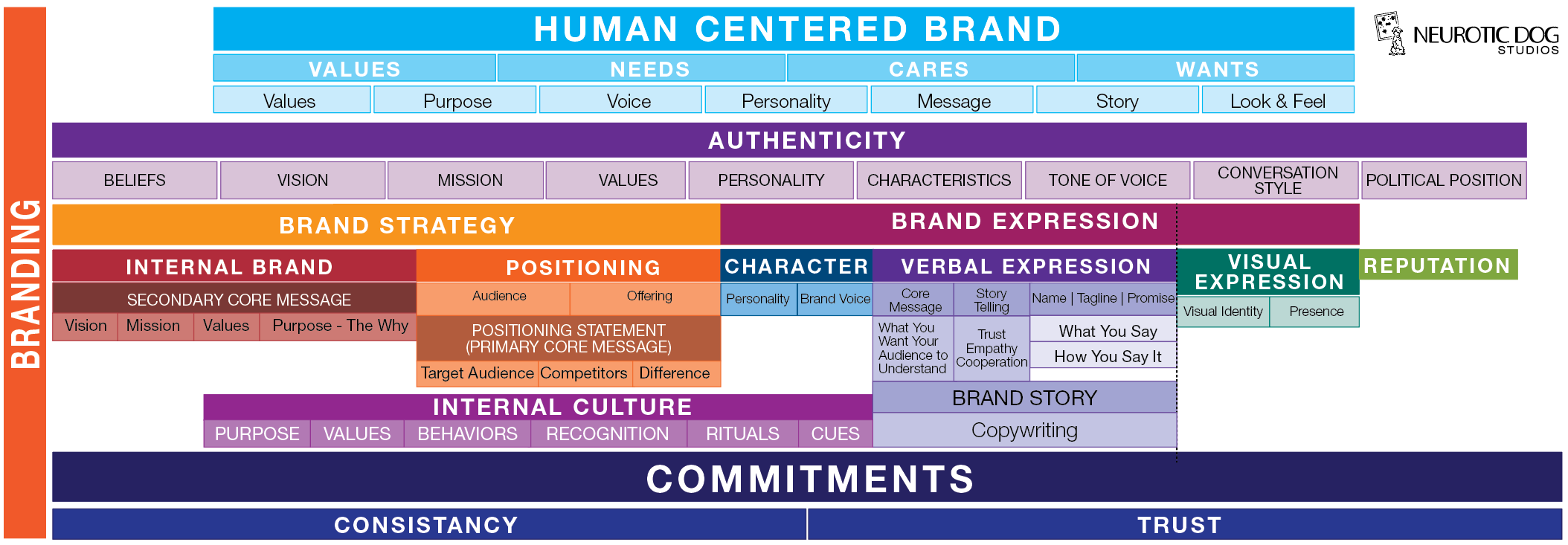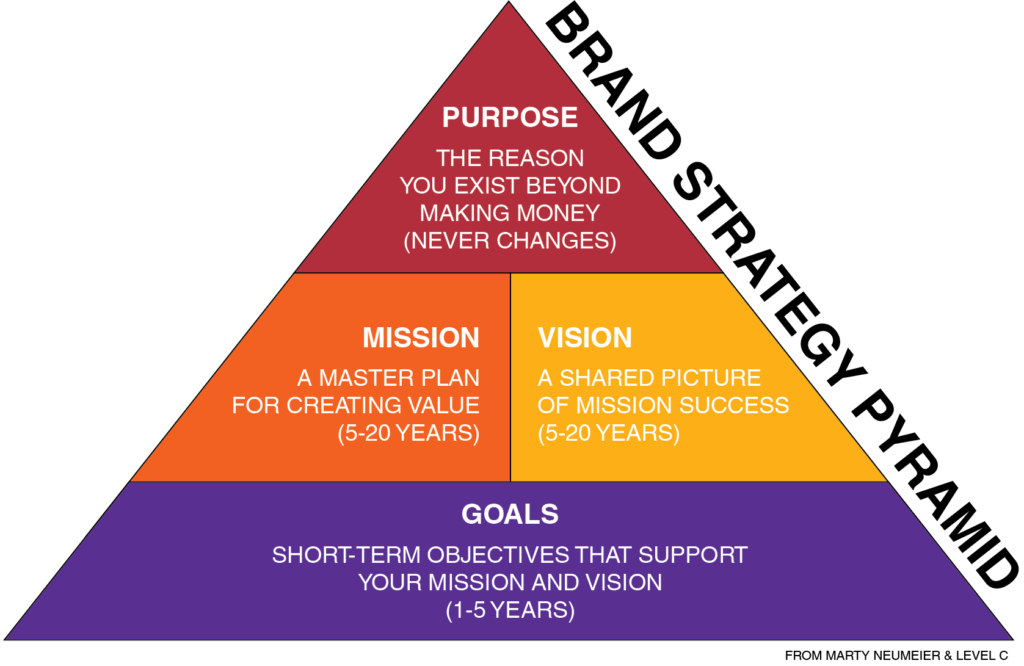Branding is one of those nebulous terms that gets thrown around a lot in business circles. It’s often used interchangeably with things like marketing and reputation. But what is branding, really? And how important is it to your business? While many people think of branding as something that is only external, they don’t realize how they feel about their company internally affects external perceptions. The article will give you an overview of the concept of internal branding and how it’s critical to developing your company culture.
The Difference Between Internal and External Branding
To fully understand what internal branding is and how it benefits your company, you need to understand the difference between internal and external branding.
Internal branding is all about creating a strong and cohesive brand from the inside out. It starts with developing a clear vision, mission, and values that guide everything from communicating with employees to how you design your office space. It’s also about building a strong reputation and creating a culture that reflects your brand values.
External branding is all about how you communicate your brand to the outside world. It starts with developing a clear positioning and then crafting a verbal and visual expression that brings that positioning to life. It differentiates your practice from the competition and builds trust with potential customers. It also includes reputation management, which is all about protecting and promoting your brand in the marketplace.

The most successful companies are those that focus on both internal and external branding. By creating a solid foundation with internal branding and then communicating a clear, compelling message to the outside world, you can set your company up for long-term success.
What are Vision, Mission, and Purpose?
Your vision, mission, and purpose are the foundation of your brand. They articulate what you stand for as a business and guide everything you do, from your products and services to how you treat your customers.
An internal branding strategy starts with clearly articulating your vision, mission, and purpose. These three elements will help you focus your efforts and ensure that everyone in your company is aligned with your brand.
 Your vision is the shared picture of mission success. It’s what you want to achieve as a business and should be inspiring and aspirational.
Your vision is the shared picture of mission success. It’s what you want to achieve as a business and should be inspiring and aspirational.- Your mission is the value you wish to create. It drives you as a business and should be clear, concise, and easy to remember.
- Your purpose is the reason why you exist beyond making money. It’s what sets you apart from other businesses, and it should be authentic and meaningful.
Once you’ve articulated your vision, mission, and purpose, you must start living them daily. That means infusing them into everything you do, from interacting with your customers to designing your products and services. Internal branding is all about living your brand from the inside out.
Writing Your Vision Statement
One of the first steps in creating a strong internal brand is writing a clear and concise vision statement. This statement should capture the essence of what the company is all about and what it hopes to achieve. It should be inspiring and aspirational yet realistic. The vision statement is the shared picture of your mission’s success and typically changes every 5-20 years.
If you’re not sure where to start, here are some tips for writing a compelling vision statement:
- Keep it focused. When crafting your vision statement, it’s important to keep the focus narrow. You don’t want to try and encompass everything in your statement, making it feel scattered and overwhelming. Instead, focus on one or two key points you want to communicate.
- Make it relatable. Your vision statement should be something that people can connect with and understand. It should be something that they can see themselves being a part of.
- Keep it simple. A good vision statement doesn’t need to be overly complicated or flowery. In fact, the simpler it is, the better. Use language that everyone can understand and avoid jargon as much as possible.
- Be specific. Once again, you don’t want to try and cover too much ground with your vision statement. Be clear about what you want to achieve and what you stand for. This will make it more powerful and memorable.
- Paint a picture. Rather than telling people exactly what the future will look like, paint a picture of what it “will be like” to belong to your organization/organization type. It’s essential that you create exciting and motivating images while still remaining conservative with your language.
- Make it honest. Suppose you claim that “everyone wins” when everyone only wins a little. In that case, everything you say seems less believable and inspires little confidence. Be sure to tell everyone how they WON’T win if they don’t join you.
- Be reflective of change happening in the world around you. The last thing we want is for our vision statement to feel like ancient history while we move into newfound realms of productivity and positive movement.
- It should be two sentences max. Don’t brag or talk for multiple paragraphs about how great you are. Nobody has the time to digest an entire book in one sitting. If someone wants to read a book about your company’s success, they would probably buy it — unless it’s really boring!
If you haven’t written yours yet, write it now! Conversely, if you’ve written yours and are concerned it needs tweaking but aren’t sure how to proceed, contact us so we can assist you.
Writing Your Mission Statement
Your mission statement is a foundational piece of your brand. It is not a tagline or slogan; it’s not about selling your product or service. It is about how you plan to achieve the purpose of your practice/organization; a brief statement that outlines the main plan of action to achieve the purpose of a company or organization. It is usually short, clear, and specific.
Common Mistakes
One of the most common mistakes businesses make when writing a mission statement is failing to make it specific enough. A mission statement should be clear and concise and support the organization or company’s purpose, providing a clear plan for creating value. It’s also important to avoid using industry jargon in your mission statement- keep it simple so that anyone can understand it.
Another common mistake is making the mission statement too long. A good rule of thumb is to keep it to one or two sentences. You risk losing people’s attention or sounding like you’re trying to cram too much information into one statement.
Finally, avoid making your mission statement too general or vague. Be as specific as possible about what your business does and what separates it from other companies in its industry. This will help you create a more focused and impactful statement.
Tips for Writing a Great One
Your mission statement is your company’s guiding light. It’s what motivates you and your team to keep moving forward, and it’s what keeps you focused on your goals. But how do you write a great mission statement? Here are a few tips:
- Keep it short and to the point. A mission statement should be concise and easy to understand. It’s not a place for long-winded explanations or jargon.
- Make it inspiring. A good mission statement should be aspirational, something that will excite and motivate you and your team.
- Be specific. A mission statement should be specific enough that everyone in your company knows what it means and what it covers. Avoid vague statements like “we want to be the best” or “we’re going to change the world.” Better terms would be “to be,” “to do,” and “to develop.” Remember that your mission is about the committed ACTION you will take (the now), not about the future result of that action.
- Keep it realistic. While you want your mission statement to be inspiring, you also want it to be achievable. Avoid setting unrealistic goals that will only lead to frustration.
- Keep it current. Once you’ve written a mission statement, make sure you revisit it every now and then to ensure it’s still relevant. The world constantly changes, and your business will change with it. Your mission statement should be updated every 5-20 years.
Examples:
| Dentist: | To increase confidence To give the freedom to eat what you want |
| Chiropractors: | To bring freedom of movement To reduce pain and suffering |
| For Neurotic Dog Studios: | To assist businesses through the development and utilization of their branding, graphics, and marketing to change the lives of their individual end client(s) and their client communities. |
Mission statements can be helpful for employees, customers, and other stakeholders to understand what a company or organization is all about. They can also be used to help make decisions about where to allocate resources and how to best achieve goals.
Writing Your Value Statements
Your company’s value statements are the foundation of your internal brand. Each should be concise, clear, easy to understand, and actionable.
- Identify a list of daily values for your practice (these can be one-word statements).
- Make sure they are important to your practice’s day-to-day activities and interactions. Think about how you want your patients to experience your practice and what you would want them to say.
- Create a short list (3-10) of values, then convert each into a sentence – with a VERB. Make them actionable. Write each sentence in a way that captures the essence of the value for your practice. Ideally, they would be written in a way that makes them easy to remember.
Having value statements guides your staff’s decisions, actions, and behaviors and rings true to your patients and prospects.
Crafting Your Purpose Statement
Your purpose statement is the foundation of your brand. It’s how you communicate what you do and why you do it to your employees and customers. A purpose statement should be clear, concise, and inspiring. It should be something that everyone in your organization can rally behind. It is the UNCHANGING element of your brand. If your purpose changes, you are no longer the same business you were before.
Crafting a purpose statement is not easy, but it’s worth taking the time to get it right. Here are a few tips:
- Keep it short and sweet. A purpose statement should be no more than a few sentences.
- It’s the why behind what you do. What is the reason that your business/practice exists in the first place — It’s NOT to make money, but something else…. what?
- Be specific. Vague statements won’t inspire anyone.
- Get input from your team. Ask them what they think your company’s purpose is, and use their feedback to inform your final statement.
- Make it memorable. A great purpose statement should be something people can easily remember and recite.
Once you have a draft of your purpose statement, share it with your team and get their feedback. Revise it as needed until you have a final version that you are happy with. Then, start living up to it.
